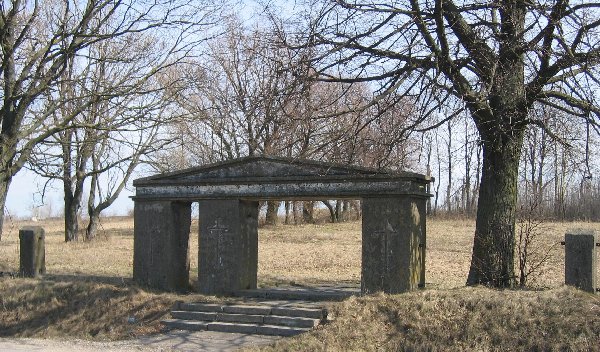
| Warsaw | — | Suwalki | — | Kaunas | — | Daugavpils | — | Rezekne | — | St.Petersburg |
©Pictures by Joost Lemmens
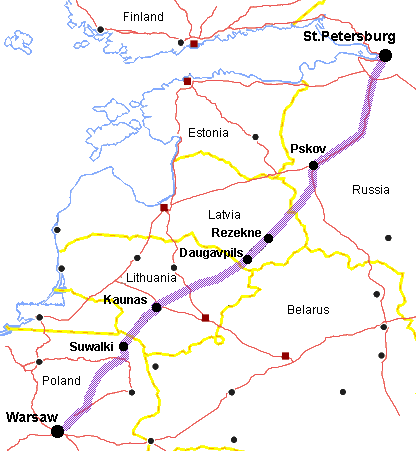
After Napoleons invasion of Russia in 1812 and his subsequent retreat, most of the former Kingdom of Poland was annexed by the Russian Empire as the Grand Duchy of Warsaw. To integrate these newly acquired territories with the rest of the Empire it was decided to build a road linking Warsaw with the Russian capital St. Petersburg.
The project was approved and started by decree of Czar Nikolai I in 1828 (although many of the dates given are conflicting). From Warsaw the road would to Suwalki in what is now the northeastern corner of Poland. It would then cross Lithuania and what is now the eastern Latvian province of Latgalia, — both former northeastern territories of the Polish kingdom which had been annexed by Russia only a few years earlier — passing through the cities of Kaunas (Russian Kovno, now Lithuania) and Daugavpils (Russian Dvinsk, now Latvia). It would continue in an almost straight line northeast to the ancient Russian city of Pskov, and ultimately Saint Petersburg.
It was a modern road for that time. Built for horse-drawn vehicles, it ran as straight as geography would allow, with a thick gravel bed and deep ditches at the sides. It was lined with rows of firs, some of which still stand today.
Along the road, a large number of service buildings were constructed, in a distinctly recognizable classicist style. Most striking of these were the post stations, but there were also customhouses, buildings for road surveillance and maintenance, and taverns.
We may divide the road into the following parts:
The Polish section: Warsaw-Lomza-Augustow-Suwalki. Often following existing roads, it is not covered here. Although I have driven there once I don't have any pictures of it.
The Lithuanian section: Marijampole-Kaunas-Zarasai. This is the part with the most interesting architecture, making up most of this page.
The Latvian section: Daugavpils-Rezekne-Karsava. The eastern Latvian province of Latgalia has always been a much poorer region, which reflects in the state of the remaining buildings. My trip usually ends near Rezekne, where I turn east to Ludza. I haven't found the opportunity yet to explore further up to the Russian border.
The Russian section: Pskov-Luga-St.Petersburg. A seemingly endless road running straight as a line across a flat and monotonous landscape: I have traveled there once but didn't take any pictures yet.
After crossing the Polish-Lithuanian border, the new, recently opened motorway to Kaunas bypasses the old Czars Road. We will follow the old road here, leading through Kalvarija and Marijampole.
But first, we start our journey with a monument of more recent times.

On a recently placed stone, just behind the entrance gate, one can read an inscription in Lithuanian and German. Translated from the German, it reads: “In the year 1939 interment began on the German cemetery”
This is a bit strange, as 1939 was the year of the Molotov-Ribbentrop pact, the repatriation of 50,000 ethnic Germans from Lithuania to Germany, and the beginning of machinations that would ultimately lead to the annexation of Lithuania by the Soviet Union. Could 1939 have been the year of the exhumationof the graves, with subsequent re-burial on German soil? Kalvarija lies only some 30 km from the former German border, and it did have a small German minority before the war. Judging by its style and size it could also very well have been a WWI war cemetery, which would explain why the graves were later removed.
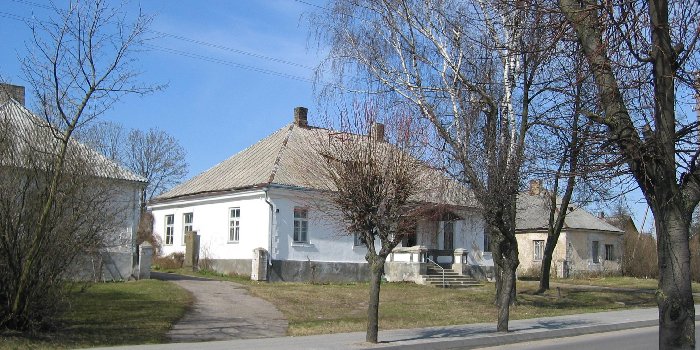
The old Post Office of Kalvarija, built in 1825. Post stations, the origin of which goes back to the middle ages, were constructed every 15-20 km, near mayor crossings, villages or towns. They were used not only for postal services, but also had stables as horse-changing stations, inns, passenger waiting rooms and lodgings.
They were of a clearly recognizable type, basically U-shaped with the opening toward the road. The most simple ones only had the end buildings of the U shape in brick or stone, while the more elaborate ones had a central building between the ends of the U facing the road, like here in Kalvarija.
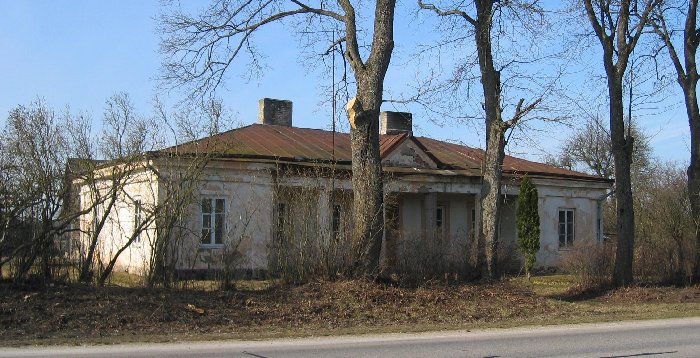
Another type of road related building is the Garrison House, like this one in Marijampole, built 1820-1829. They held the military guards, officers and soldiers, responsible for road safety, as well as custom officials. Goods and baggage were checked, road taxes collected and travel permissions issued.
The Kaunas-Zarasai section of the Warsaw-St.Petersburg road was built in 1830-1835.
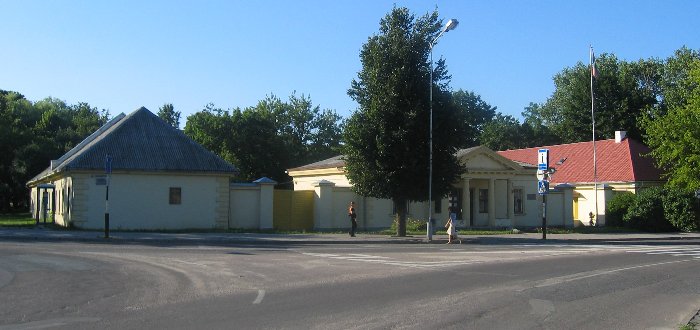
The Jonava post station buildings (1833-1835) are now occupied by the regional museum.
|
Most common are these kind of simple quadratic houses, built for road maintenance and surveillance. |
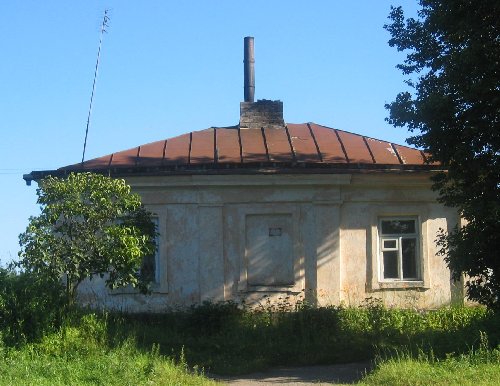
|
The Ukmerge post station is one of the best-preserved in Lithuania.
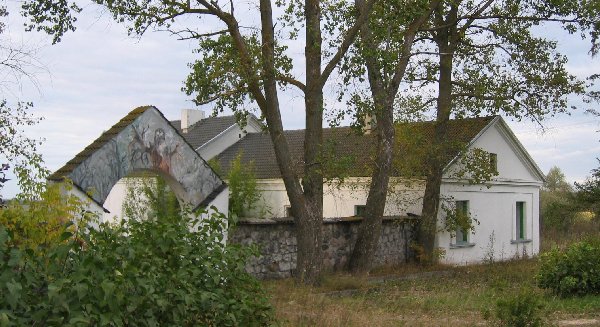
This simple but well preserved post station is situated near the Skiemonys road crossing. It consists of both left and right wings with an entrance gate leading to the courtyard. The wooden buildings at the back of the court have all gone.
|
Antalge road maintenance or toll house. |
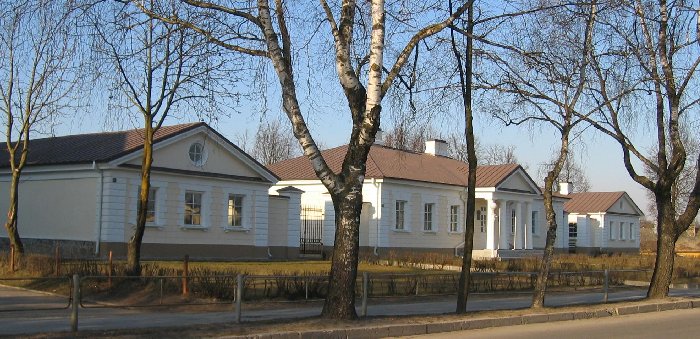
Although Utena was first mentioned in 1261, not many old monuments survived the ravages of wars and town fires. The building of the Warsaw-St.Petersburg road gave a great boost to its economy. Then a fire in 1879 burned down two thirds of the houses, and a second one in 1890 ruined much of the rest. The old post station, built in 1835-1836, was spared and is one of the best examples in Lithuania.
|
Of the Daugailiai Post Station, built in 1836, only the left wing remains. |
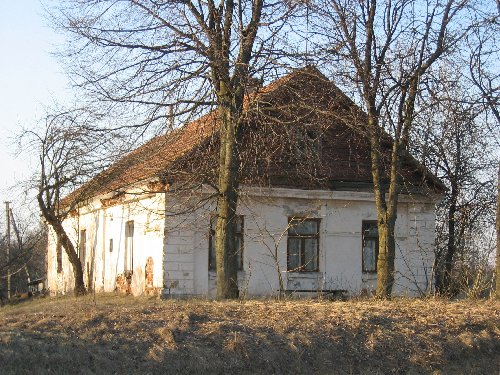
|
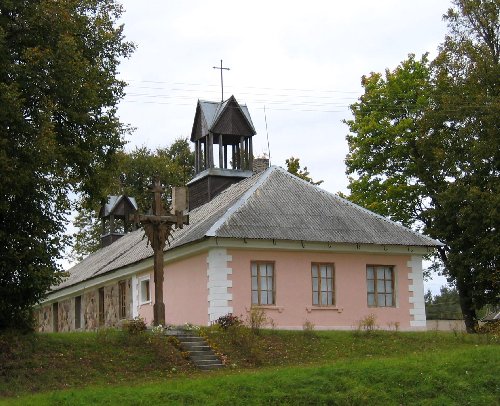
|
The left wing of the Deguciai post station has been converted into a church. |
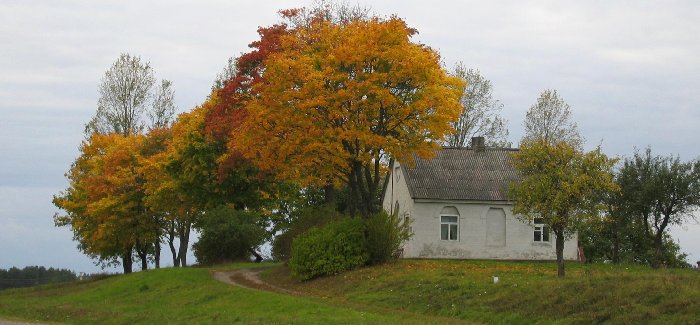
The unusual style of the road maintenance building in Asavytu, which looks somewhat like a small gothic chapel, may be an allusion to local (Lithuanian) building styles.
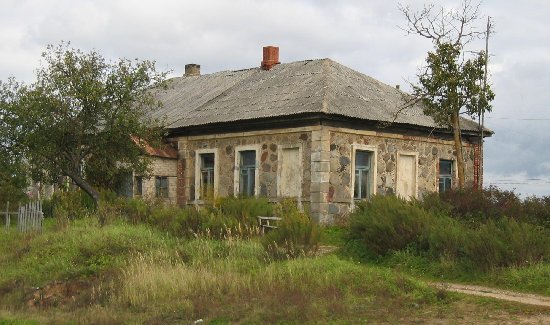
Just past Spogi, some 25 km north of Daugavpils, stands this road maintenance house. The unplastered stonework is typical of Latvian building styles.
|
Somehow this house — at Rusona, near the Aglona road crossing — has a slightly different feel. |
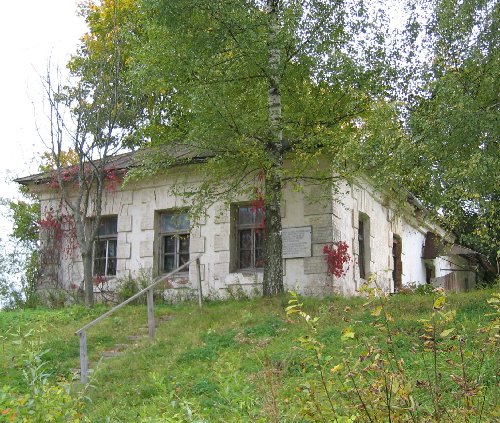
|
The function of the above building is not clear, but it is situated just before the ruined Caunes post station. It is also located on a far better hilltop location than that building, so perhaps it may have taken over its function?
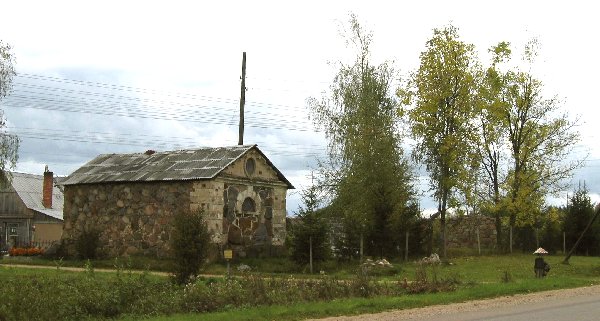
The post station near the tiny village of Caunes seems to have been of a modest type. Only the front sections were built of stone, while the rest of the wooden buildings have long gone. Of the right wing only some ruins remain, which can only vaguely be seen behind the trees.
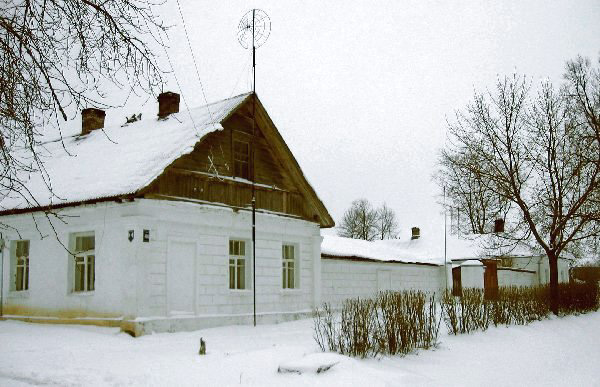
Built in 1863, the Malta post station is one of the better-preserved ones in Latvia.
When we approach the town of Rezekne we tentatively end with another more recent memento: a small WWII war cemetery wit a monument for Aleksandr Matrosov, War Hero of the Soviet union (who isn't actually buried here, but in Ufa, Bashkortostan, Russia — neither did he die here, but at Velikye Luki, some 200 km eastward, also in Russia.)
|
The monument of Aleksandr Matrosov, who in 1943 during the battle near Velikye Luki threw himself on an enemy machine gun. For this he was posthumously awarded the title of Hero of the Soviet Union and extolled as an example for all to follow. |
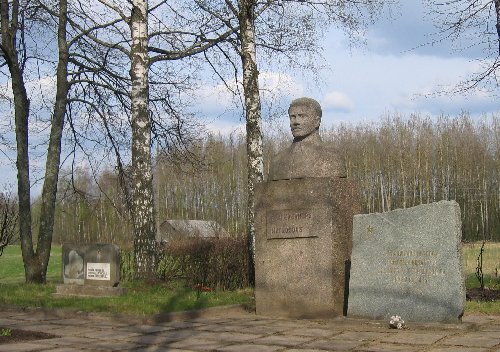
|
About the road:
My other pages: